Unique Wooden Stave Churches Were Built Without Nails – Remarkable Technology Helped Them Survive
A. Sutherland - AncientPages.com - Norway's stave churches were built on remarkable technology that contributed to their uniqueness. The structures are impressive and highly unique examples of medieval architecture.
This technology was remarkable and required knowledge of geometry and skills in building without iron nails.
Many churches display Viking art depicting dragons and other animals mixed with Christian motifs. Dating back to the middle ages, these unique structures – often called' Viking Cathedrals' and built with unique building secrets - represent Viking heritage in carved wood. They testify to a time when young Christianity lived side by side with the customs and traditions of the Vikings.
The Construction Of A Wooden Church Was A Big Task
The construction required knowledge of geometry and skills in building without iron nails, which gave the building's wood maximum flexibility and durability. Instead, all the parts of the structure were joined together with studs. This method provides some features with recessed grooves into which other components can fit, known as pin joint. The stave churches could stand steadily, even during the most severe storm.
With the pitched roof, falling snow will also slide off so the top does not collapse.
Undoubtedly,' stave churches' are architectural masterpieces from the distant past, constructed to celebrate the birth of Christianity in Norway. They bravely managed to survive in the country's harsh nature almost 1,000 years after they were erected.
Once, about 1,000 of them were in the country; today, only 28 last historical stave churches remain in Norway. Some sources mention even older structures built before the 12th century, but none of them managed to survive until today.
Something that all stave churches have in common is that they have a framework of boards built over bottom beams and that they are supported by poles (rods). The name of this church style comes from the load-bearing walls of the churches - stave walls.
Urnes Stave Church
The oldest of Norway's stave churches - Urnes Stave Church – located in Luster municipality in Western Norway - is included on UNESCO's World Heritage List. UNESCO samples taken from the base timbers show that the timber was felled between 1129 and 1131.
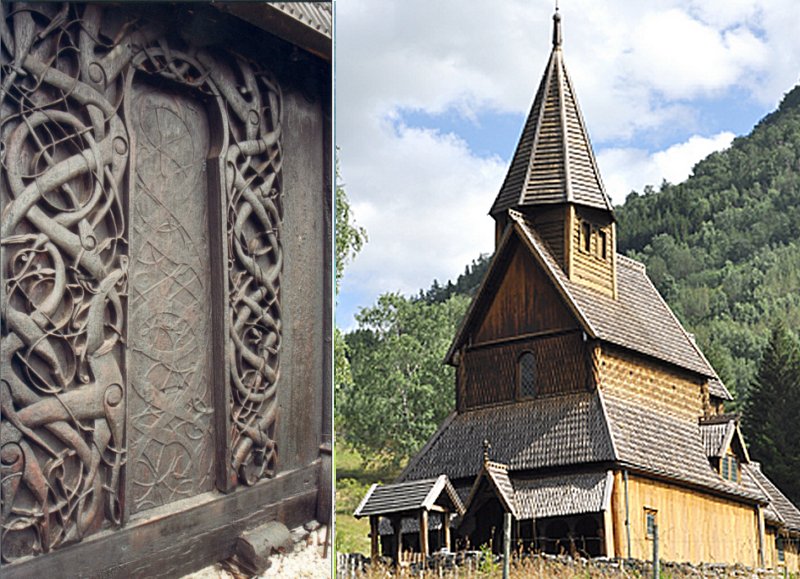 Left: Arch decoration from Urnes Stave Church. Image credit: Nina Aldin Thune - CC BY-SA 3.0; Right: Stave church Urnes, exterior view. Photo: Micha L. Rieser.
Left: Arch decoration from Urnes Stave Church. Image credit: Nina Aldin Thune - CC BY-SA 3.0; Right: Stave church Urnes, exterior view. Photo: Micha L. Rieser.
However, according to experts, the distinctive carvings on the north portal are from an even older church. The North portal of the 11th-century Urnes Stave Church is decorated with depictions of snakes and dragons, which symbolize Ragnarok.
Like other stave churches of Norway, also this one represents the visual evidence of the Viking culture’s transformation, assimilation, and adoption of Christianity.
Heddal Stave Church
Heddal's stave church was built in the 13th century and is one of Norway's best-preserved stave churches. It is also the country's largest stave church, with a length of 20 meters and a width of 16 meters, as well as an impressive height of 26 meters. The church's one door is for men, one for women, one for the clergy, and one in the west for processions. Today, only the west entrance is in use.
Outside of the stave church of Heddal, Norway. Image credit: Micha L. Rieser - CC0 1.0
A legend says that the Church was built in only three days.
Five farmers (Raud Rygi, Stebbe Straand, Kjeik Sem, Grut Grene, and Vrang Stivi) from Heddal decided to build a church. One day, Raud (one of the five men) met a stranger who was willing to build the Church under three conditions, one of which must be fulfilled before the Church was finished. These three challenging options were: fetch the sun and the moon from the sky, forfeit his lifeblood, or simply guess the stranger's name. The farmer Raud believed the last one would not prove too difficult, so he agreed to the stranger's terms.
All the building materials had arrived during the first night, and strangely, the spire was built during the second night, and Raud knew that the Church would be finished on the third day, as the stranger promised. Fearing for his life, Raud walked around in the field, desperately trying to figure out what the stranger's name could be. Suddenly, he heard a strange but also lovely female song. Now, Raud knew what to do and who the stranger really was.
On the third day, the stranger appeared to show Raud the Church. In the church interior, Raud walked up to one of the pillars and hugging it as if to straighten it, he said:
"Hey Finn, this pillar isn't straight!"
"I could be even more bent!" answered Finn and quickly left the Church.
Raud had solved the riddle, after all. The stranger's name was Finn, a mountain troll who lived in Svintru Mountain. He was known as Finn Fairhair or Finn Fagerlokk, and as he could not stand the sound of church bells, he moved with his family to Himing (Lifjell), far from the Heddal Church.
In the Heddal Stave Church, powerful symbols are designed to scare off evil powers and invite people into the sanctuary of the Church. The Church's beautiful features include smiling medieval mask heads, floral decorations, and motifs from the legend of Sigurd the Dragon Slayer.
This myth has functioned as a link between pagan tales and Christian teachings. The bishop's chair is still here with carvings representing Brunhilde and her suitors Gunnar and Sigurd on either side.
Stave Church From Gol
It was built in Gol, Hallingdal; however, it was dismantled and moved to Oslo in the 1880s, as King Oscar II of Sweden and Norway instructed.
The west portal is original, while the south portal is an 1884 copy.
Left: Gol Stave Church Museum; Image credit: https://scandinavianheritage.org/tour-the-park/gol-stave-church-museum/; Right: Stave Church from Gol/ Norsk Folkemuseum. Haakon Harriss / Norsk Folkemuseum - https://norskfolkemuseum.no/
The Church was most likely decorated in Catholic times with colorfully painted saints. Numerous runic inscriptions and carvings dated to the early Middle Ages in the Church. Most of the carvings show animal figures, humans, and geometric symbols.
Borgund's Stave Church
Borgund Stave Church is a triple nave stave church located in the village of Borgund in the municipality of Lærdal in Sogn og Fjordane county, Norway. It is classified as... of the so-called Sogn-type.
Left: Borgund Stave Church - is a unique example of impressive medieval architecture. Image source; Right: Two of the four dragon heads that adorn the church's ridges. Image credit: Håkon Li - (via Kongevegen)
It is also the best preserved of Norway’s 28 extant stave churches. The timber for Borgund Stave Church was felled in the winter of 1180–1181, and the church was most probably completed shortly after. The earliest written record of the church dates back to 1331, and today, it is dedicated to St. Andreas.
Most remarkable and odd are the four dragon's heads (they remind us about those used on the prows of the old Viking ships). They also must have played the same role as gargoyles - ancient fearsome creatures warding off evil spirits, and often seen in medieval Cathedrals in Europe.
Stave Churches Associated With Fables And Viking Heroes
From abroad, the Norwegians also received inspiration for the decoration of churches.
From ancient records is known that the Norwegian people got the inspiration for the decoration of both interior and exterior of their stave churches from abroad. An extraordinary motive depicting a mythical animal with a long, slender neck and narrow eyes originates in England and Ireland. The animal resembled a dragon without wings, and this motif quickly became frequently attached to the decoration of churches.
However, the Christian Norwegians needed more than dragons. Old Viking tales were still popular, especially during the dark and long winters when people gathered by the fireplace in their tiny houses. Some told these stories, and many listened. Most probably, fairy tale heroes have long lived in the imagination of Christian Norwegians.
The heroes, therefore, often adorned the portals and posts of the country's stave churches. The priests had much tolerance for the pagan motifs because they believed that the ancient legends helped the population with the transition from the ancient faith of the Vikings to Christianity.
Most of Norway's stave churches were built between 1150 and 1350, with different techniques, depending on the region and construction period. The simplest ones had only one nave and a roof based on the walls. Those with the most complex structure and a considerable height had three naves.
Stave churches were usually built in less populated areas, valleys, forest land, and fishermen's villages on islands and villages along fjords.
Updated on January 30, 2024
Written by – A. Sutherland - AncientPages.com Senior Staff Writer
Copyright © AncientPages.com All rights reserved. This material may not be published, broadcast, rewritten or redistributed in whole or part without the express written permission of AncientPages.com
Expand for referencesReferences:
Reed, Michael F. “Norwegian Stave Churches and Their Pagan Antecedents.” RACAR: Revue d’art Canadienne / Canadian Art Review 24, no. 2 (1997): 3–13.
More From Ancient Pages
-
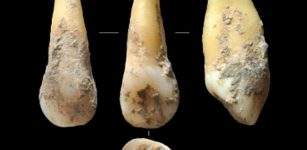 Common genetic origin for farmers from Central Europe and the Mediterranean area
Human Beginnings | Sep 5, 2015
Common genetic origin for farmers from Central Europe and the Mediterranean area
Human Beginnings | Sep 5, 2015 -
 3,000-year-old knight discovered at the Palidli necropolis
Civilizations | Aug 22, 2015
3,000-year-old knight discovered at the Palidli necropolis
Civilizations | Aug 22, 2015 -
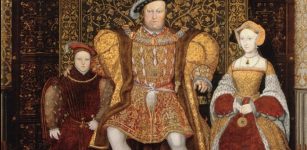 On This Day In History: Henry VIII Ascended The Throne Of England – On Apr 22, 1509
News | Apr 22, 2016
On This Day In History: Henry VIII Ascended The Throne Of England – On Apr 22, 1509
News | Apr 22, 2016 -
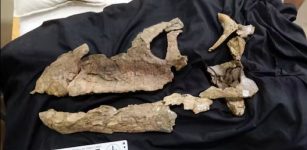 First Near-Complete Sauropod Dinosaur Skull Found In Australia Hints At Ancient Links Between Continents
Featured Stories | Apr 13, 2023
First Near-Complete Sauropod Dinosaur Skull Found In Australia Hints At Ancient Links Between Continents
Featured Stories | Apr 13, 2023 -
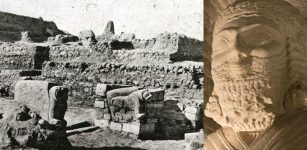 Arslantepe Mound – Home To The Oldest City-State Of Anatolia
Featured Stories | Jun 7, 2022
Arslantepe Mound – Home To The Oldest City-State Of Anatolia
Featured Stories | Jun 7, 2022 -
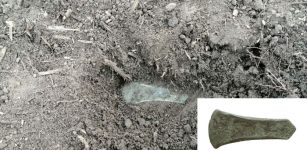 Rare Early Bronze Age Axe Discovered In Slovakia
Archaeology | Jul 2, 2022
Rare Early Bronze Age Axe Discovered In Slovakia
Archaeology | Jul 2, 2022 -
 Just 7% Of Our DNA Is Unique To Modern Humans – We Are Not Much Different From The Neanderthals
Archaeology | Jul 27, 2021
Just 7% Of Our DNA Is Unique To Modern Humans – We Are Not Much Different From The Neanderthals
Archaeology | Jul 27, 2021 -
 Mysterious Books From The Unknown And ‘Impossible’ Coincidences
Featured Stories | Dec 30, 2020
Mysterious Books From The Unknown And ‘Impossible’ Coincidences
Featured Stories | Dec 30, 2020 -
 Why Was Napoleon Bonaparte Defeated At Waterloo?
Ancient History Facts | Jul 3, 2017
Why Was Napoleon Bonaparte Defeated At Waterloo?
Ancient History Facts | Jul 3, 2017 -
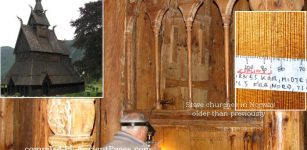 Medieval Wooden Stave Churches In Norway Are Older Than Previously Believed
Archaeology | Nov 8, 2019
Medieval Wooden Stave Churches In Norway Are Older Than Previously Believed
Archaeology | Nov 8, 2019 -
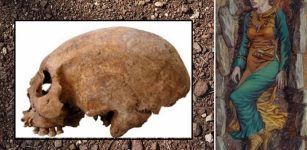 Unusual Viking Women With Elongated Heads On Gotland, Sweden
Featured Stories | Mar 28, 2024
Unusual Viking Women With Elongated Heads On Gotland, Sweden
Featured Stories | Mar 28, 2024 -
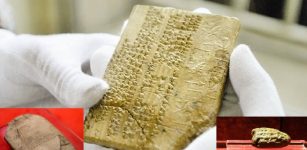 Priceless Cuneiform Clay Tablets Of The Achaemenid Empire On Display At Qazvin Museum
Artifacts | Jul 24, 2020
Priceless Cuneiform Clay Tablets Of The Achaemenid Empire On Display At Qazvin Museum
Artifacts | Jul 24, 2020 -
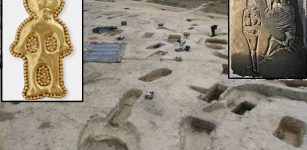 Ancient DNA And Historical Context Were Used To Explain Kinship, Social Practices Of Avar Society
Archaeology | Apr 25, 2024
Ancient DNA And Historical Context Were Used To Explain Kinship, Social Practices Of Avar Society
Archaeology | Apr 25, 2024 -
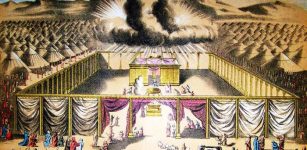 Ten Ancient Jugs And Shiloh May Reveal The Location Of The Biblical Tabernacle
Artifacts | Feb 6, 2019
Ten Ancient Jugs And Shiloh May Reveal The Location Of The Biblical Tabernacle
Artifacts | Feb 6, 2019 -
 The Perplexing Story Of The Seven Continents And The Seven Mysterious Races – Can The Past Foretell The Future? – Part 2
Featured Stories | May 15, 2022
The Perplexing Story Of The Seven Continents And The Seven Mysterious Races – Can The Past Foretell The Future? – Part 2
Featured Stories | May 15, 2022 -
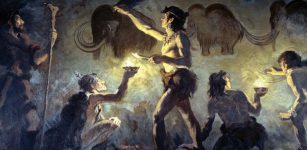 First Carbon-Based Paleolithic Paintings Found In Font-De-Gaume Cave, France Could Be 19,000 Years Old
Archaeology | Dec 29, 2023
First Carbon-Based Paleolithic Paintings Found In Font-De-Gaume Cave, France Could Be 19,000 Years Old
Archaeology | Dec 29, 2023 -
 Curly Hair Protected The Brain Of Early Humans And Helped It Grow
Human Beginnings | Aug 31, 2023
Curly Hair Protected The Brain Of Early Humans And Helped It Grow
Human Beginnings | Aug 31, 2023 -
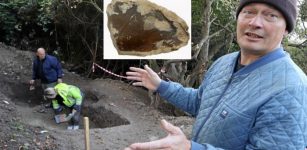 Adaptable And Flexible Neanderthals May Have Inhabited Danish Island 120,000 Years Ago
Archaeology | Oct 25, 2020
Adaptable And Flexible Neanderthals May Have Inhabited Danish Island 120,000 Years Ago
Archaeology | Oct 25, 2020 -
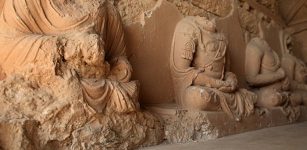 Takshashila: Renowned Learning Center That Attracted Buddhist Masters, Disciples And Students Of The World
Featured Stories | Jul 23, 2016
Takshashila: Renowned Learning Center That Attracted Buddhist Masters, Disciples And Students Of The World
Featured Stories | Jul 23, 2016 -
 Papyri Was Still In Use After The Arab Invasion In Egypt
Archaeology | Jul 14, 2020
Papyri Was Still In Use After The Arab Invasion In Egypt
Archaeology | Jul 14, 2020




